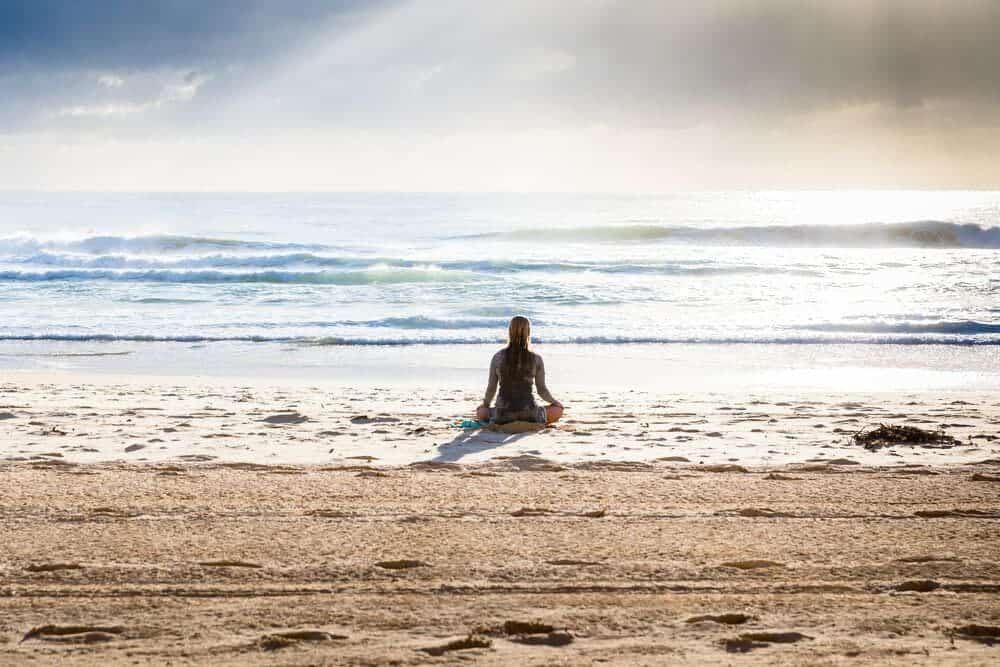Mindfulness. We hear this word thrown around with astonishing frequency—so much so that it seems like becoming more mindful can be a panacea for anything that ails us. What does it mean though, and how exactly do you practice mindfulness?
Well, being mindful simply means being fully tuned in and present to the moment at hand. It is being attentive to where you are and what you are up to, right here, right now.
Practicing mindfulness can be the beginning of freedom from the petty tyrants of our thoughts and emotions. So many of us are ruled by what goes on in our heads, and have gone to great lengths to avoid reality, or numb ourselves to difficult feelings. And, if we are to stay clean and sober, we must change—plain and simple. Mindfulness is a tool that gives us freedom from the mental chatter and discomfort that often goes along with it. It offers us a path to relief from fear, obsessiveness, boredom, and anxiety.
Transformation often begins with taking stock. Instead of being constantly steamrolled by our thoughts and feelings we can pause and say “Hmm. Is this still true for me?” or “Oh hello, fear.” This often takes the teeth out of our emotions and gives us a calmer place to move forward from. With this practice, we can begin to become more awake to the world around us and even make friends with it (and ourselves!). Mindfulness is all about paying attention, and paying attention is one of the most transformative things we can do.
Here are some easy ways to get started:
Seated Meditation
Otherwise known as “sit down and do nothing.” Surprisingly, this is harder than it sounds. It may take a little while for this practice to be rewarding, but stick with it. Our inner lives can be as rich and complex as anything we can find out in the world. We suggest setting a timer and starting small. Three minutes, five minutes, maybe even ten minutes. Find something to focus on, and when your mind wanders from it—which it definitely will—just gently guide it back. Some people use their breath, a candle, or a simple phrase—whatever it is, just keep trying to return to that anchor point. This is more rewarding than it may sound.
Create reminders
Even if we have incorporated seated meditation, what about the rest of the day? It’s great to practice mindfulness for a few minutes in the morning but the more we can integrate this practice into our days, the greater the benefit. Creating reminders to “check-in” can be really useful. For example, every time you get into the car. Or pick up the phone. Or use the bathroom: “What’s going on with me right now? What’s my head up to?” Am I really present to what I am doing or am I totally somewhere else? A great way to practice becoming more present is simply to try noticing what’s around you. How does the steering wheel feel under your hands? Are the birds singing right now? You get the idea. We are learning to tune in and bring ourselves more fully to each experience as if it is special and not to be missed.
Focus on the breath
There are scores of different breathing exercises, and a quick search online can offer guidance on various techniques. But breath is as old as life itself and nothing fancy is required to use this always-available tool. Deep belly breaths are known to calm the nervous system and get us out of “fight or flight” reactions, and are a great remedy for anxiety. Simply imagine your belly filling up with breath at each inhale, as if it were a balloon, and at each exhale, notice it emptying. Placing the hands gently on the stomach can help you stay focused on each breath. Another breathing exercise we like involves inhaling through the nose, noticing the tiny moment when the inhale breath becomes the exhale, and exhaling through the nose. This requires a bit of focus and can be wonderful for bringing you into the present and leaving you feeling peaceful and energized.
Try an app or read a book
There are scores of apps out there built specifically to support people as they explore mindfulness and meditation. We like Insight Timer, which aside from being just a straight up timer, also offers scores of guided meditations to address everything from sleeplessness to building confidence. If that isn’t your bag, there many inspiring books can help you develop your practice. A classic that has gotten many people on the road is Wherever You Go, There You Are, by Jon Kabat-Zinn.
No matter where you get started, mindfulness is a powerful and healing practice. We wish you luck, and most of all, attentiveness!

Recent Comments